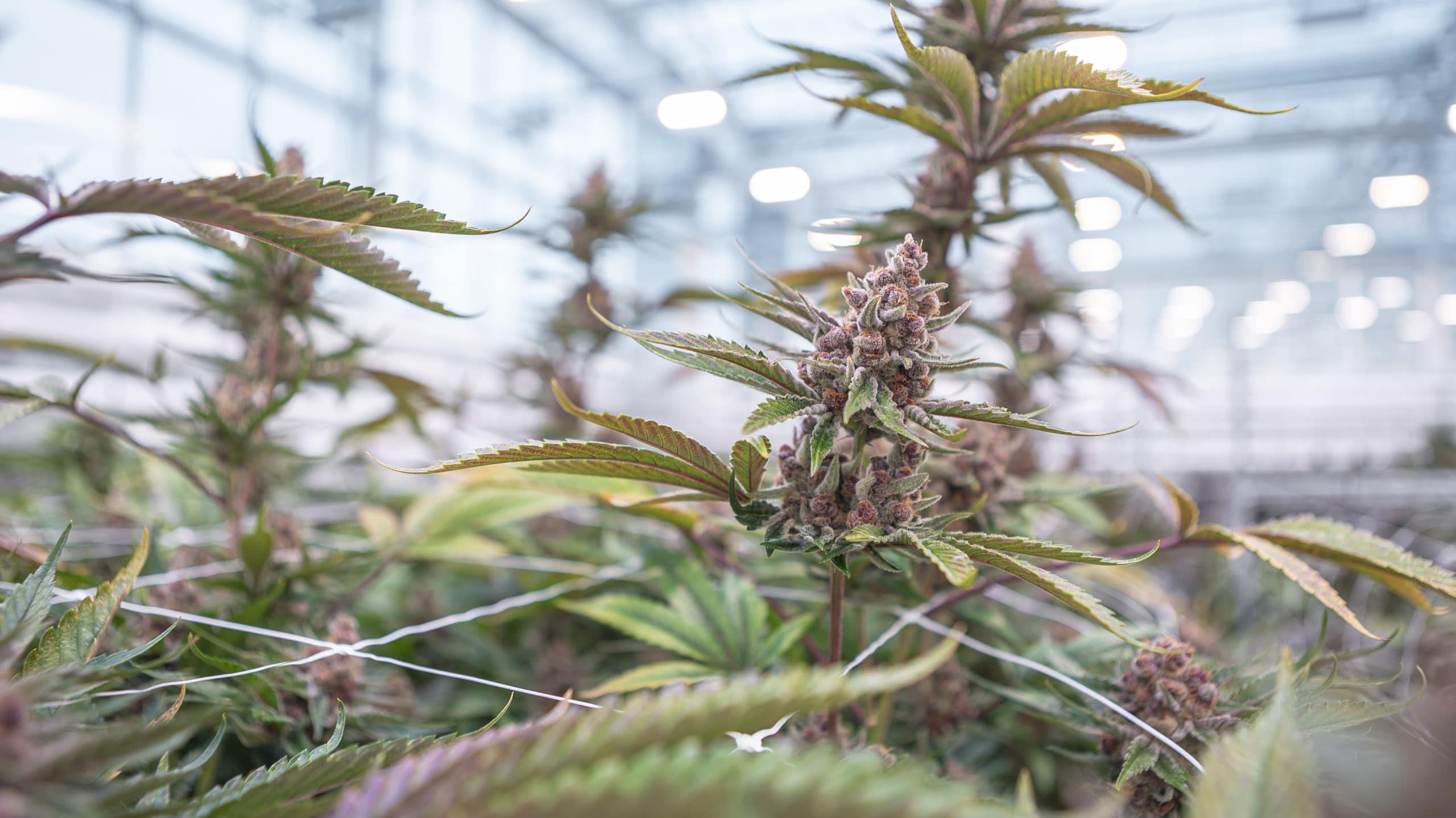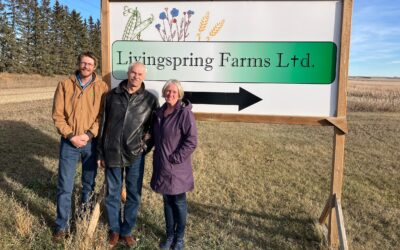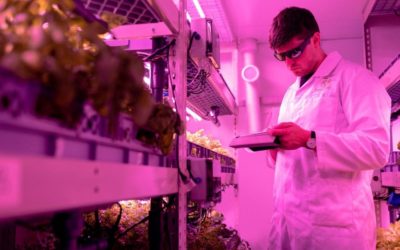Some of the seed sector’s most well-known names are popping up in the cannabis realm. Here’s why this crop represents new opportunities for these industry stalwarts.
Charles Pick began his career in forage seed in 1990. Serving as vice-president turf operations for the Pickseed Companies Group — a company co-founded by his grandfather and run by his father and uncle — his interests quickly grew into the biotech space. He worked for BASF for 11 years leading their genomics lab DNA LandMarks, eventually spurring him to found his own biotech consulting firm and then work in one of the country’s newest spaces — cannabis.
As senior vice-president science and innovation for Aurora Cannabis, he’s now helping lead one of the world’s top cannabis companies as it rapidly expands and prepares to mark three years since recreational cannabis was legalized in Canada.
“A friend of mine said, ‘You know, your knowledge would really be applicable to the cannabis industry.’ It appeals to the ag science background that I have, because to a certain extent cannabis has been totally untouched by modern agricultural practices. It’s almost like discovering a new species because so many improvements can be made,” says Pick.
The irony of him starting his career in forage and ending up in cannabis is not lost on Pick and his family.
“Cannabis is nothing I ever expected to work in. My dad likes to tell people that at least I’m still in the grass business.”
Don’t let the sense of humour fool you, though. Pick is serious about cannabis. Aurora is Canada’s top medical cannabis platform in terms of revenue. It’s also one of the leading international cannabis platforms. Headquartered in Edmonton, Alta. it has licensed production facilities across Canada and Europe and serves patients and consumers worldwide.
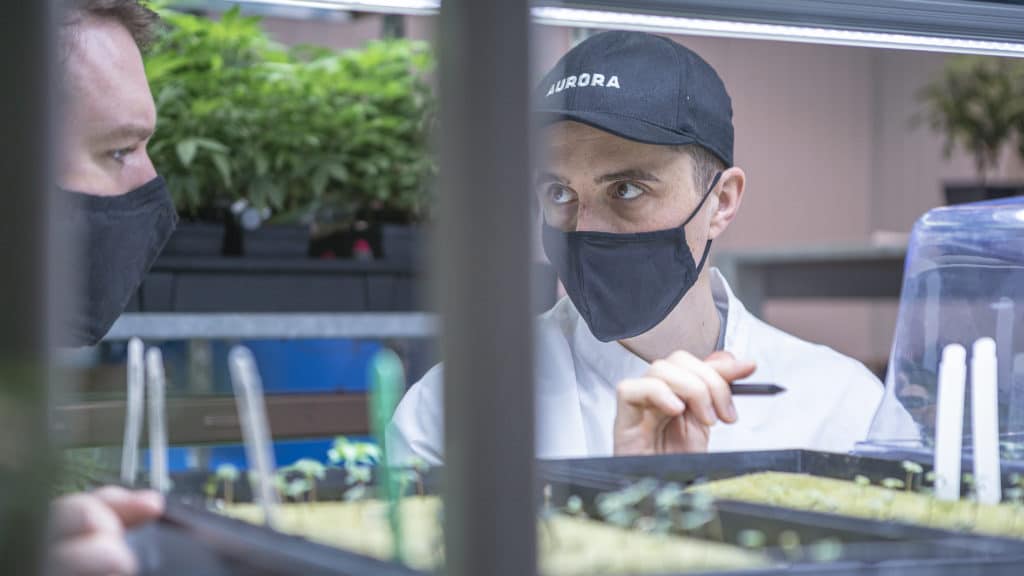
With recreational cannabis increasingly becoming more socially acceptable in Canada and beyond (retired Canadian Olympic athlete Perdita Felicien recently called for the plant to be removed from the Games’ banned substances list, for example), Pick says the story of cannabis is only in its infancy.
Three years ago, when Canada was preparing to legalize recreational cannabis, questions abounded among market analysts regarding access to germplasm and how the market would shape up as the cannabis economy began to evolve. Product shortages were the norm as cannabis stores began opening their doors in October of 2018.
Fast-forward to 2020 and Canadian cannabis sales doubled, according to Brightfield Group’s latest Canadian Cannabis Market report, which pegged sales at $2.6 billion last year. Furthermore, the Canadian adult-use cannabis market grew 118 per cent in 2020, dominated by flower. You might say cannabis is coming into its own.
Breeding Breakthroughs
Aurora recently celebrated a portfolio refresh and launched three new cultivars.
“Our breeding and genetics program has been a huge success for us. These three cultivars are the first new genetics that stood out in a couple of years, as we’ve largely been running with the same portfolio products for the last three years,” Pick says.
“We also have cultivars that are commercially ready that are being trialed by other companies as well, and we’re talking to those companies about licensing our genetics. That’s a big piece for us.”
Aurora’s cannabis innovation centre in Comox, B.C., is the epicentre of the breeding work that led to the three newly released cultivars.
Opened in 2019, the 32,200 square-foot facility is as big as some commercial production facilities.
“Building this breeding facility was a huge investment. Staffing it with scientists and breeders is not a small commitment. Every gram of cannabis that we produce here has to be destroyed. We have a research licence, meaning we can’t use it for anything else,” Pick says.
“We can’t use it for distillate or any other product. It’s dedicated solely to breeding and genetics. It represents a huge commitment to science and innovation on our part.”
All About the Quality
As research progresses, so does the industry’s knowledge of the science behind the cannabis plant.
“A big majority of our effort right now is focused on creating quality products. That’s about chemistry to a large extent,” says Greg Baute, senior director of breeding and genetics for Aurora.
A lot goes into making a quality cannabis product, Baute notes. Yes, THC plays an important role, but just as key are appearance, flavour and aroma. Aurora works with focus groups to determine what product qualities appeal most to consumers.
“Cannabis is a lot like wine. People consume it for the aroma, the bouquet. We spent a lot of time literally going out and smelling the flowers, looking for those unique profiles. Every now and then something pops up that just really blows us away.”
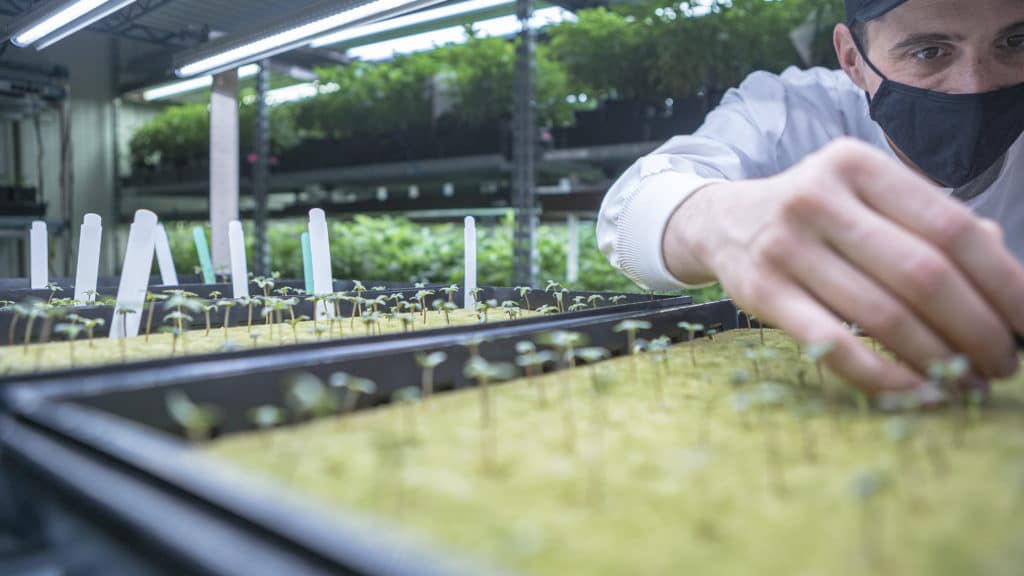
Like Pick, Baute also comes from a seed industry family. His dad founded corn seed company Maizex Seeds. After a stint with Monsanto as a trait geneticist, Baute moved to the cannabis space in order to work in a crop whose genetic secrets researchers are only beginning to unravel.
“I was working in California when it was legalized there. I ate lunch with plant breeders every day, and so many of us were talking about the research they wanted to do in cannabis. It’s decades behind every other crop. The research done in tomatoes and peppers in the 1950s, that’s the basic sort of stuff we’re doing right now in cannabis. That’s what made me think, ‘I should really think about cannabis as my next career.’”
Jim Brandle had the same experience. He served as chief executive officer for Ontario’s Vineland Research and Innovation Centre for over a decade, overseeing major research projects on tomato and other horticultural crops. The promise held by cannabis lured him into the next phase of his career. He now serves as vice-president of plant performance with Ontario-based Canopy Growth Corporation.
“I have 35 years of experience in the agricultural industry. When I first joined Canopy Growth in 2018 there were very few people that had specific experience with cannabis agricultural R&D, including breeding and crop protection. It felt like a massive opportunity to take the skills I had accumulated over the course of my career and apply them to cannabis,” he says.
“Legal cannabis agriculture is still new and there’s so much room for growth when it comes to advancing plant performance, THC yield, and better sensory experience. It’s incredibly exciting to be part of an industry that is making a substantial difference to people’s lives.”
Related Articles
With New Cultivars, Industry Trailblazers are Creating Cannabis 3.0
4/19: A Red-Letter Day for Canadian Hemp Varieties
Those differences come in a myriad of forms.
Brandle notes cannabis isn’t just about THC anymore. Awareness around CBD and other cannabinoids is building, and consumers are beginning to appreciate the different flavours and aromas present in different cultivars.
Canopy continues to invest in research and innovation to develop strains capable of producing flower for direct consumption and are working to refine the way that people experience cannabis.
“That includes developing varieties that directly meet the needs of consumers with specific desired effects, because we believe that is the future of how people will interact with cannabis,” Brandle says.
“This will include products that can support people to achieve their desired state whether that’s connecting, focusing, managing stress, unwinding or sleeping.”
Canopy is also in a position to increase bud production at the same time as improving consumer quality. This includes understanding genetic diversity and using crosses between diverse strains to take advantage of hybrid vigour.
“In line with that, we are also improving our production systems — fertility, irrigation, disease and insect pest management — so that genetic potential can be fully realized.”
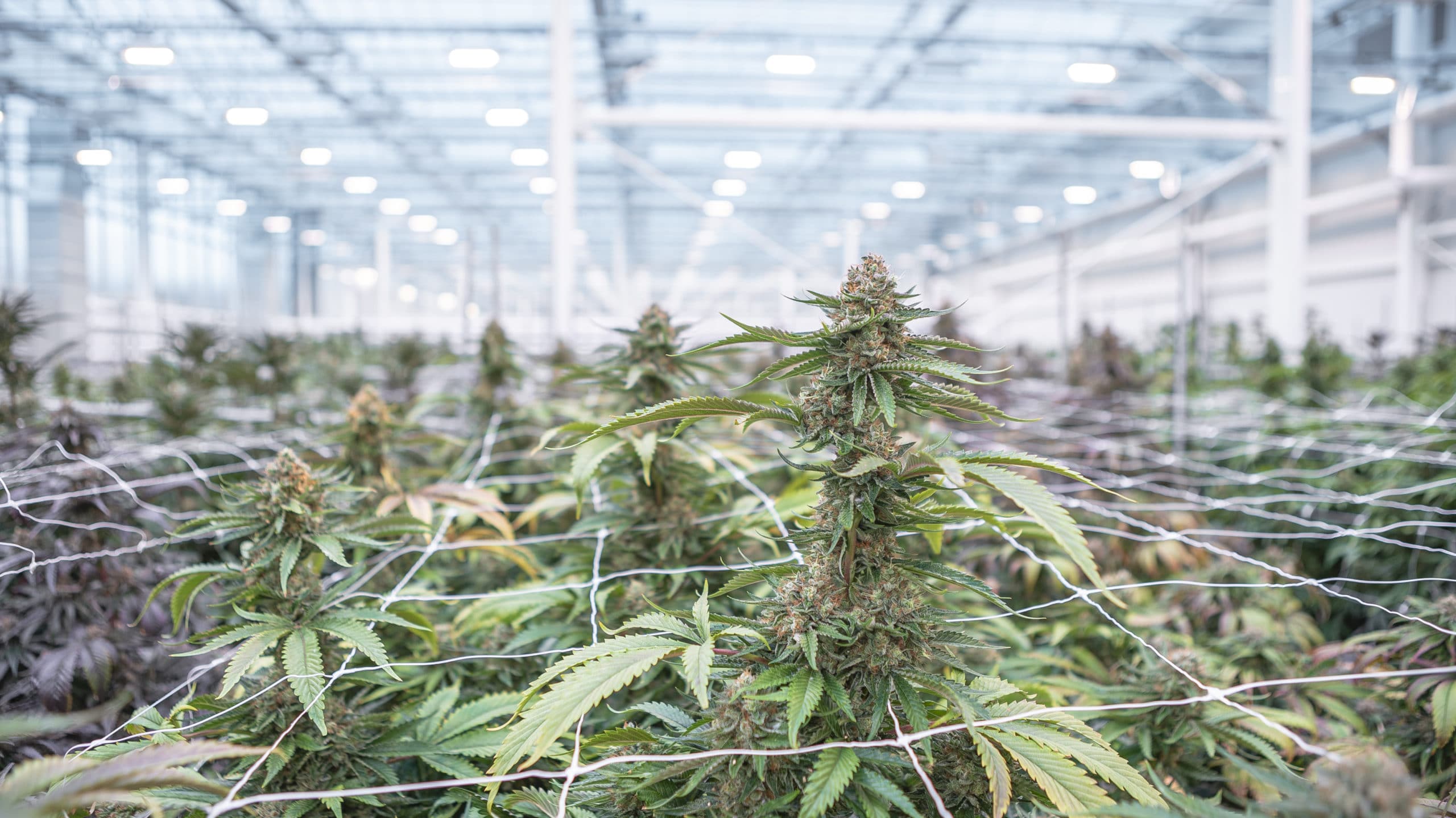
Head Start for Hemp
The industrial hemp sector has had somewhat of a head start when it comes to scaling up production and moving to seed. Scott Horner, a former Canadian Seed Trade Association president and board member for the Canadian Seed Growers’ Association, entered the cannabis realm in 2018 when he co-founded Tritium 3H to serve the three main pillars of Canada’s high-demand hemp industry — fibre, food and medicinal.
On April 19 of this year, Health Canada added high-CBD industrial hemp varieties to its list of approved cultivars, allowing industrial hemp seed suppliers to provide the industry with cannabis varieties low in THC but high in other valuable cannabinoids.
“Industrial hemp in Canada has been deregulated to a degree and available for field scale crop production for over 20 years. With the development of food and fibre markets hemp is becoming a more significant crop. Part of what’s driving growth is consumer awareness and demand for natural plant-based products; whether protein for food, fiber for hempcrete or car parts, consumers are attracted to hemp as a sustainable production source,” Horner says.
Enter CBD. With interest in its therapeutic properties growing, Horner says the time was right to enter the space to help further legitimize a crop that was once illegal in Canada and was only legalized by the United States government in 2018.
Refining the Experience
According to Pick, the changing experience among consumers will only continue and will help spur new innovations in cannabis as those consumers focus less on THC content and consider the full range of qualities exhibited by the plant.
“Yes, a lot of consumers still focus on THC content. They want the most bang for their buck, so to speak. That’s largely because it’s early days in this industry. The same thing happened with alcohol prohibition. You’re going to see a much more sophisticated approach among cannabis consumers in terms of selecting products, which is going to take some time. I compare it to how the fine wine and craft beer industries have evolved,” Pick says.
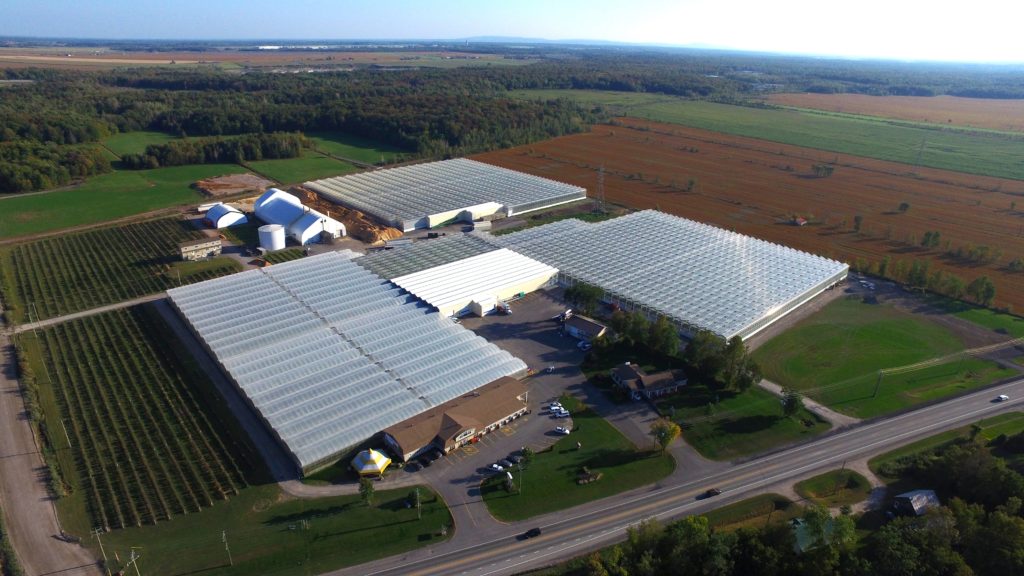
As consumer preferences shift, so will the way cannabis is produced. Currently, the crop is propagated through cuttings, but researchers are actively working to change that as the genetics evolve. Currently, issues with disease are significant, and producers are extremely limited in terms of what they can use in the way of herbicides. Moving away from cuttings to seed will help solve that, Baute says.
“Moving to seed is the next step in the evolution of growing this crop. That shift will remove a lot of the pathogen issues,” Baute says.
Aurora is working full-time on genetic resistance to disease. The company is taking part in a large powdery mildew resistance project in conjunction with the University of British Columbia, made possible through a $2.1-million matching grant from Genome Canada and Genome BC. The project, titled Fast-Tracking Breeding of Powdery Mildew-Resistant Cannabis, is led by UBC researchers Loren Rieseberg and Marco Todesco.
The improved cannabis cultivars will result in reduced losses to pathogen contamination and increase product quality. The breeding pipeline itself will also be used in the future to identify other important production and higher-value traits and introduce them into cannabis cultivars.
The long-term goal, of course, is scaling up production.
“Given that we are in the early stages of the legal cannabis industry, we are still identifying how to grow cannabis at scale. Cannabis is one of the most heavily regulated industries in Canada, and with that, we are always leaning on our team’s creativity and past agriculture experience to develop and implement new best practices,” Brandle adds.
Header photo — Cannabis plants at Aurora Cannabis’ facility. Photo: Aurora Cannabis


